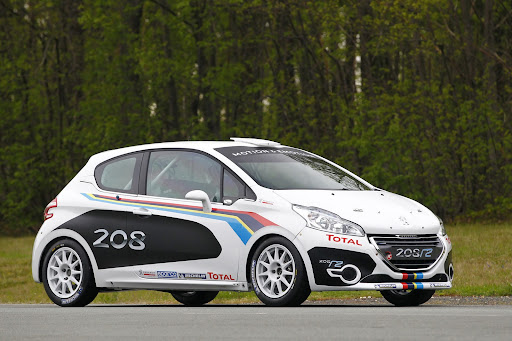From the outside there's no apparent difference between a BRZ with the manual transmission and one with the automatic. So no one will make fun of you.
Some roads are built strictly for entertainment.
Everything a Subaru has never before been.
 |
| 2013 Subaru BRZ Limited Automatic |
They've been on the market only a few weeks, but already there's a high church of the Subaru BRZ and Scion FR-S sport coupes. The 200-horsepower twins are venerated as both saviors and saints: a sinless return to sports car purity. A purity that includes lightweight construction, a straightforward suspension, precise steering and, of course, a six-speed manual transmission. But heresy is on the option sheet in the form of a six-speed automatic.
From a strictly orthodox perspective, an automatic-equipped BRZ is a total betrayal of everything the 2013 Subaru BRZ is supposed to stand for. It interferes with the driver's communion with the road, cracks apart the shifting ritual and generally screws with the divine communication. A BRZ automatic may as well be a Buick, yet thankfully, it's not.
 |
| 2013 Subaru BRZ Limited Automatic |
Not Beyond Dual Clutch
With its quick manual shifts and aggressive operation changing gears on its own, it's natural to assume the BRZ's six-speed automatic transmission is a dual-clutch device like the setup found in various Audi, Porsche and VW products. It even feels
like a dual clutch. But it's not.
It's actually a rather ordinary automatic with an unremarkable torque converter. What makes it work so well are the algorithms embedded into its electronic controls that elevate it to a whole new level of responsiveness for this type of conventional transmission.
The software here is optimized for spirited driving. It's not trying to be squishy soft around town during commutes; even in its laziest setting it still shifts firmer and more suddenly than most average drivers would find comfortable. In reality, it's not very Buick-ish at all.
Bull Shift
The floor shifter sits just aft of the start button and looks impressively mechanical. It runs in a conventional PRNDL pattern down the right and tugs over to the left for manual operation — push forward for upshifts, pull back for downshifts. Not our preferred setup, but it does have a leather-wrapped shifter that's shaped to fit the driver's palm.
It may only be an electronic switch, but the shifter operates with a mechanical feel that matches its looks. The detents for each gear need to be muscled through, and when shifting manually it requires a firm push or pull. The only automatic shifter that feels better is the PDK in the new Porsche 911.
Paddles mounted behind the steering wheel can also be used to trigger shifts even when the transmission itself is left in automatic mode. The paddles are plastic but also well weighted, with quick positive action that simulates actual mechanical connection.
OK, it's all simulated mechanics. But it's solid fakery.
 |
| 2013 Subaru BRZ Limited Automatic |
The Differences It Doesn't Make
According to Inside Line
's scales, the silver 2013 Subaru BRZ Limited automatic weighs in at 2,800 pounds even. That's 66 pounds more than the blue BRZ Premium manual IL tested in March. Subaru's specifications have the two cars 60 pounds apart, with 46 or 47 pounds of that in transmission weight. The rest is the equipment — leather heated seats, dual-zone ventilation and such — that separates the Premium (which is the base car) and the Limited (which is the sole upgrade trim).
The additional heft of the automatic transmission does also slightly shift the weight balance of the BRZ. Once again according to IL
's scales, the BRZ Premium manual carries 55.7 percent of its weight on the front wheels and the BRZ Limited automatic has 56 percent of its mass on the front tires. A distilled and frozen concentrated version of Sebastian Vettel couldn't tell the difference.
Otherwise, except that the automatic adds $1,100 to the price, the manual and automatic versions of the BRZ are the same. That includes the 200-hp, 2.0-liter, direct-injection Subaru flat-4 under the hood, the perfectly stiff tuning of the all-independent suspension, the outstanding electric power rack-and-pinion steering and the 215/45R17 Michelin Primacy HP tires. It's all delicious stuff. OK, the tires aren't, but they work just fine.
The BRZ automatic's 117-foot braking performance from 60 mph, 0.89g skid pad orbit and 67.2-mph blast through the slalom are all close enough to what the manual-transmission car recorded to be within the realm of car-to-car production variation.
Torque Converted
This BRZ may have a torque converter, but it doesn't have a lot of torque. According to Subaru the engine peaks at a maximum of 151 pound-feet while spinning at 6,400 rpm. So it takes a moment for the engine to get that converter going for a good launch.
The result is a rather chunky 0-60-mph time of 7.9 seconds with the traction control off (7.6 seconds with 1 foot of rollout as on a drag strip). And that's with the driver doing the shifting. The best run through the quarter-mile was 15.8 seconds at 91.3 mph.
In comparison, the manual-transmission-equipped BRZ traipsed from zero to 60 mph in 7.3 seconds (7.0 seconds with rollout) with traction control off. Its best time through the quarter-mile was 15.3 seconds at 92.1 mph.
So drag racers ought to opt for the manual-transmission BRZ. Actually, they should opt for a different car entirely, but that's a whole other subject. If anything, a closer look at the acceleration times indicates that you should think twice before assuming the manual is always better.
For instance, with the traction control on, the manual transmission car uses 2.8 seconds to run from 45 mph to 60 mph, while under the same conditions it takes the automatic car 2.6 seconds to perform the same trick. Meanwhile, with traction control turned off, both the automatic and manual cars need 2.5 seconds to get from 45 mph to 60 mph.
Those intermediate acceleration times indicate that the manual transmission car's speed advantage isn't clear-cut once both cars are already moving. That was particularly apparent during the photo shoot on a California mountain road, where the automatic BRZ never seemed strained climbing through the tight corners. Or at least no more strained than the manual version. In fact with its firm shifts, for some drivers it may be easier and more fun to drive quickly in the automatic car than the manual.
Three-Way Tranny
Besides the traction and stability control systems every 2013 Subaru BRZ has, the automatic transmission can operate in three different modes of its own. There's a regular mode, which still shifts with satisfying heft, and Sport mode, which brings harsher, quicker shifting either when left on its own or shifted manually. The third mode, "Snow," is for gingerly slogging through grim weather and went untested by Inside Line
while driving during June and July in Southern California.
For the most part, the car felt most responsive when wired up with the Sport transmission setting. Dive into a corner with the nannies off, hit the left paddle to downshift into 2nd and the transmission holds the gear through the corner as the tail gracefully drifts out. Hit the right paddle to shift up and the BRZ straightens itself out and heads to the next corner as if it were actually fueled by apexes.
Around town, the Normal mode was better. It's not lazy, just a little less in your face. Sometimes a car just needs to be a car.
The Thrill of Agony
In an ideal world, every Subaru BRZ owner would have a second car for commuting and a third one for hauling the family. The BRZ would be saved strictly for those days when twisty roads beckon or the local road course is offering volume discounts on laps.
But it's likely that most BRZ owners will be buying it as their sole vehicle, and it's in that context that the BRZ automatic becomes so attractive. Except for the shifting, everything that's great about the BRZ with a manual transmission is the same with an automatic.
This is a tiny car that practically dances on its modestly sized tires; it has the best reflexes available on any car that costs less than $35K and is vastly more nimble than the 2-ton behemoths the German brands are passing off as sport sedans these days. It's so low that Civics tower over it, and with its flat-4 it has a center of gravity down beneath the Earth's mantle. There are plenty of anonymous front-drive boxes that will be more comfortable commuters, but none that come near the BRZ's athleticism.
The automatic ultimately lets the $29,365 2013 Subaru BRZ Limited more convincingly pretend it's a normal car, that it's just another corpuscle in the traffic stream. But it's a pretense. This is one of the world's best sports cars, even when it's shifting itself.
This car, with this transmission, is still that good. The faith is restored.
The manufacturer provided Edmunds this vehicle for the purposes of evaluation.
 |
| 2013 Subaru BRZ Limited Automatic |




































